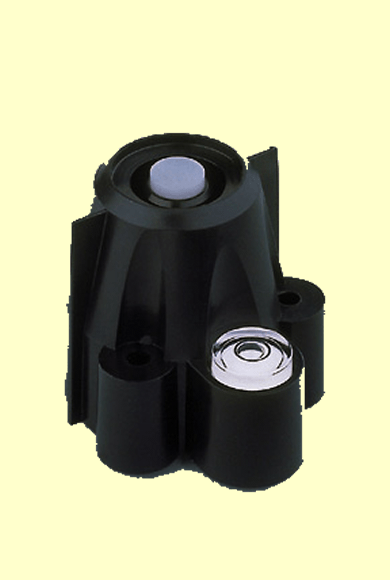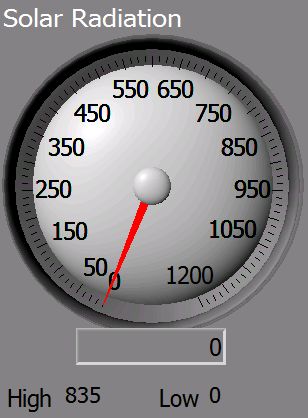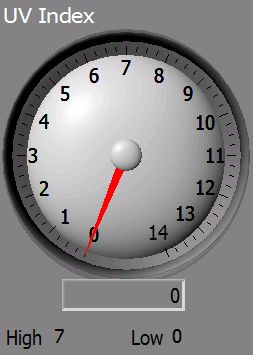- Solar Radiation
-

Radiation Detector
The the sun’s radiation is detected
by a pyranometer.This weather station contains two pyranometers – one measures solar radiation and the other measures direct and diffuse UV radiation.
Both pyranometers have sensors that absorb solar radiation. This radiation is converted to heat. The heat of the sensor generates a voltage output signal proportional to the solar radiation.
- Solar Radiation
-

Solar Radiation
On a clear summer day, the intensity of solar radiation rises from zero at sunrise to about 1000 watts per square meter at noon, then gradually declines to zero at sunset.
On a cloudy day, the solar radiation profile is more complicated and reflects the presence and thickness of clouds. Cloud cover averages 86% in December as opposed to 21% in July.
Unit of measurement = watts per square meter
- Solar Radiation
-

Ultraviolet Index
Ultraviolet (UV) radiation is usually converted to a UV-index value ranging from 0 at sunrise and sunset to 10 or higher at noon in late spring and early summer.
Over-exposure to UV radiation can lead to skin cancer. For this reason, people are wise to avoid too much exposure during mid-day hours when the UV intensity is at its highest.
Click here for information on UV exposure for your skin type.
Unit of measurement = UV index value
- Solar Radiation
-

Green Living Tip
To reduce heating and cooling needs:
- Plant deciduous trees on the south side of your home. This will allow for more sun in the winter and ample shade in the summer.
- Consider installing an awning or arbor above south-facing windows to keep your home cooler in the summer.
- Place solar panels on your roof for an easy and efficient way to capture solar radiation for hot water and electrical needs.
